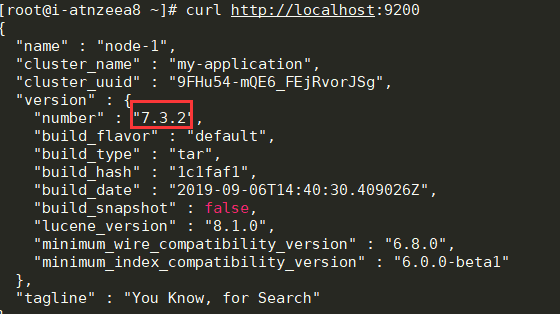ES 是一个分布式的开源搜索和分析引擎,适用于文本、数字、地理空间、结构化数据、非结构化数据等数据的搜索。ES 是在 Apache Lucene 的基础上完成开发。由 Elastic 于 2010 年发布。ES 通过其简单的 REST 风格的 API、分布式特性、速度和可扩容闻名世界。是 Elastic Stack 的核心组件。Elastic Stack 是一套用于数据采集、扩充、保存、分析、可视化的开源工具。Elastic Stack 称之为 ELK。目前 ELK 包含一系列丰富的轻量数据采集代理,这些代理被称之为 Beats。
ES 的用途
主要有以下的用途:
• 应用程序搜索
• 网站搜索
• 企业搜索
• 日志处理
• 基础设施指标和容器监测
• 应用程序性能监测
• 地理空间数据分析和可视化
• 安全分析
• 业务分析
工作原理
从多个来源输入到 ES 中,数据在 ES 中进行索引和解析,标准化并充实这些数据。这些数据在 ES 中索引完成之后,用户就可以针对他们的数据进行复杂的查询,并使用聚合来检索这些数据,在 Kibana 中,用户可以创建数据可视化面板,并对 ELK 进行管理。
索引
ES 索引是指相互关联的文档集合。ES 是会以 JSON 文档的形式保存数据,每个文档都会在一组键值对中建立联系。
ES 使用的是一种倒排序索引的数据结构。这个结构可以允许十分快速的进行全文本的搜索。
在索引的过程中,ES 会保存文档并构建倒排序索引,这样用户就可以实时的对文档数据进行搜索。索引是在添加过程中就启动的。
Logstash
Logstash 是 ELK 的核心菜品,可以对数据进行聚合和处理。并将数据发送到 ES 中。Logstash 是一个开源的服务器端数据处理管道。
Kibana
Kibana 是一款 ES 的数据可视化和管理工具,可以提供直方图,线形图,饼状图,地图。Kibana 还包含 Canvas 和 Elastic Maps 等应用程序。Canvas 可以基于用户创建动态信息。Elastic Maps 可以对空间数据进行可视化处理。
为什么要使用 ES
• ES 很快:ES 是在 Lucene 基础上构建,所以全文本搜索相当的出色。ES 还是一个实时搜索平台。文档索引操作到文档变为可搜索之间速度很快。
• ES 具有分布式的特征:ES 中保存的文档分布在不同的容器中,这些容器为分片,可以对分片进行复制并形成冗余副本。ES 可以扩充到数百台,并处理 PB 级别的数据。
• ES 包含一系列广泛的功能:ES 拥有大量的内置功能,方便用户管理数据。
• ES 简化了数据采集,可视化报告的过程:通过与 Beats 和 Logstash 集成,用户可以在 ES 中索引数据并处理数据,
ES 搭建
安装镜像:
启动容器:
修改配置:
进入容器,安装分词器:
重启 ES:
测试:
 图片
图片
查看分词器是否安装上:
 图片
图片
ES 查询
空查询
空查询将会返回一个索引库中所有文档:
在一个或者多个索引库或者所有的 _type 中查询:
使用分页:
查询表达式
只需要在查询上,将语句传递给 queue 参数:
查询语句的结构
一个查询的典型结构:
针对某个字段:
如果想要使用 match 查询 tewwt 字段中包含 elasticsesh 的内容。
合并查询
分为叶子语句,被用于将查询字符串和字段进行对比,复合语句用于合并其他查询语句。
例如下面语句:找出信件正文包含 business opportunity 的星标邮件,或者在邮件正文包含 business opportunity 的非垃圾邮件:
常用查询
match_all 查询
该查询匹配所有文档:
match 查询
用于使用分词器进行查询:
multi_match 查询
用于在多个字段上执行相同更多 match 查询:
range 查询
用于找出在指定区间内的数字或者时间:
term 查询
用于进行精确匹配:
terms 查询
用于进行多值匹配:
exists 查询和 missing 查询
用于查询在指定字段中有值或者无值的文档:
ES 索引
创建一个索引
此刻,ES 会自动创建一个索引。
删除一个索引
索引设置
• number_of_shards:每个索引的主分片数
• number_of_replicas:每个主分片的副本数
创建只有 一个主分片,没有副本的小索引:
配置分析器
standard 分析器是用于全文字段的默认分析器,包含以下部分:
• standard 分词器,通过单词边界分割输入的文本。
• standard 语汇单元过滤器,目的是整理分词器触发的语汇单元(但是目前什么都没做)。
• lowercase 语汇单元过滤器,转换所有的语汇单元为小写。
• stop 语汇单元过滤器,删除停用词—对搜索相关性影响不大的常用词,如 a、the、and、is。
在下面的例子中,创建了一个新的分析器 es_std,并使用预定义的西班牙语停用词列表。
进行测试:
通过结果进行查看:
自定义分析器
在 analysis 下的相应位置设置字符过滤器,分词过滤器,词单元过滤器。
接着创建一个自定义分析器,用于清楚 html 部分,将 & 映射为 and:
使用标准分词器讽刺,小写词条使用小写过滤,使用自定义停止词过滤器移除自定义的停止词列表中包含的词。
最后使用分析器,自定义组合过滤器和分词器。
总和如下所示:
测试一下:
可以看到结果如下所示:
最后,把这个分词器用在 string 字段上:
类型和映射
Lucene 如何处理文档
在 Lucene 中一个文档由键值对组成。在索引文档的时候,每个字段的值都会添加到相关字段的倒排序中。
类型如何实现
每个文档的类型名称将会保存在 _type 字段上,当要检索字段的时候,ES 会自动在 _type 字段上检索。
例如在 User 类型中,name 字段会映射声明为 string 类型,并索引到 name 的倒排序中,需要使用 whitespace 分词器分析。
Lucene 索引的每个字段都包含一个单一的扁平的模式
在 Lucene 中,一个特定的字段可以映射到 string 类型或者是 number 类型,但是不能两者兼具。因为 ES 添加的优于 lucene 的额外机制(以元数据 _type 字段的形式。)在 ES 中所有类型都最终共享相同的映射。
在上方中,"name"/"address" 和 "timestamp"/"message" 虽然是独立的,但是在 Lucene 中是一个映射。
对于整个索引,映射在本质上被 扁平化 成一个单一的、全局的模式。
Java 连接 ES
添加依赖:
创建 ES 集群:
 图片
图片
连接 ES:
测试结果:
 图片
图片




























